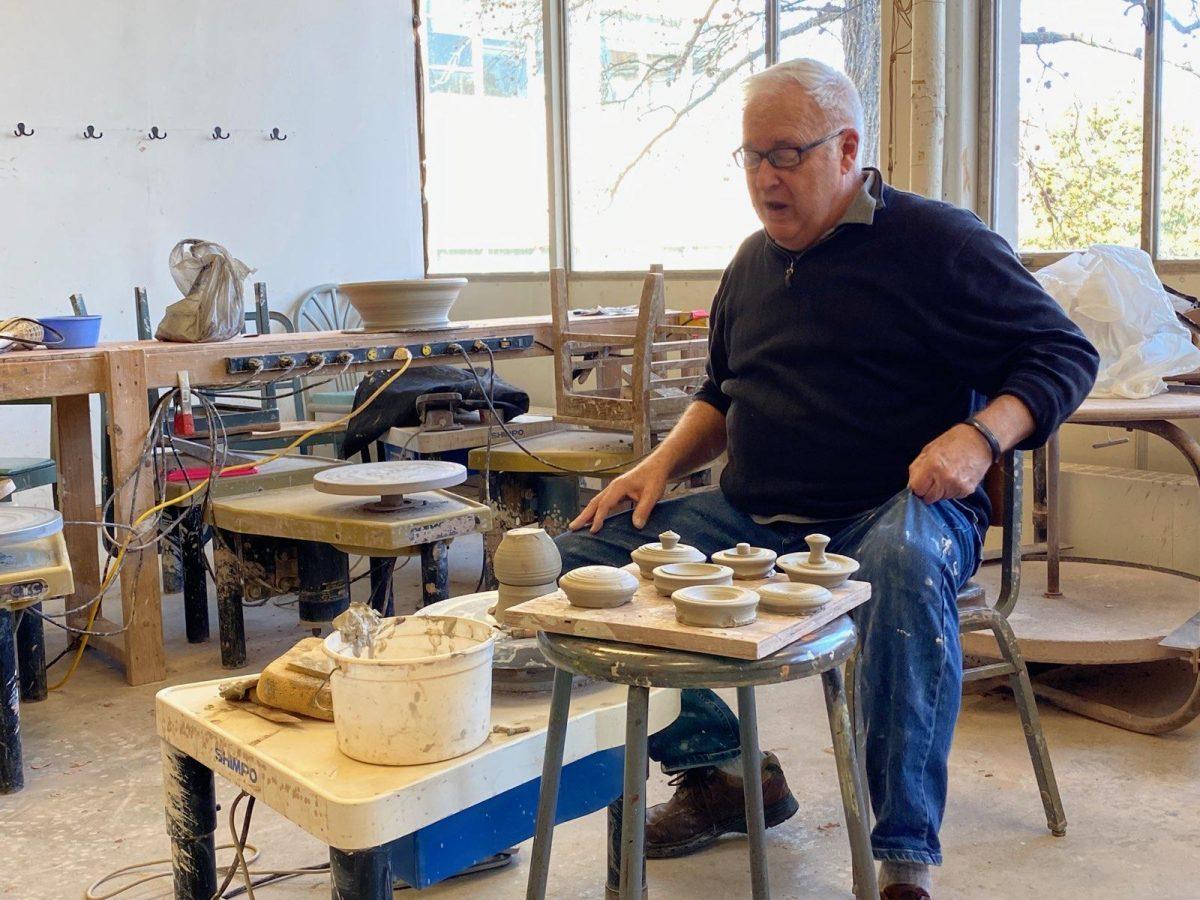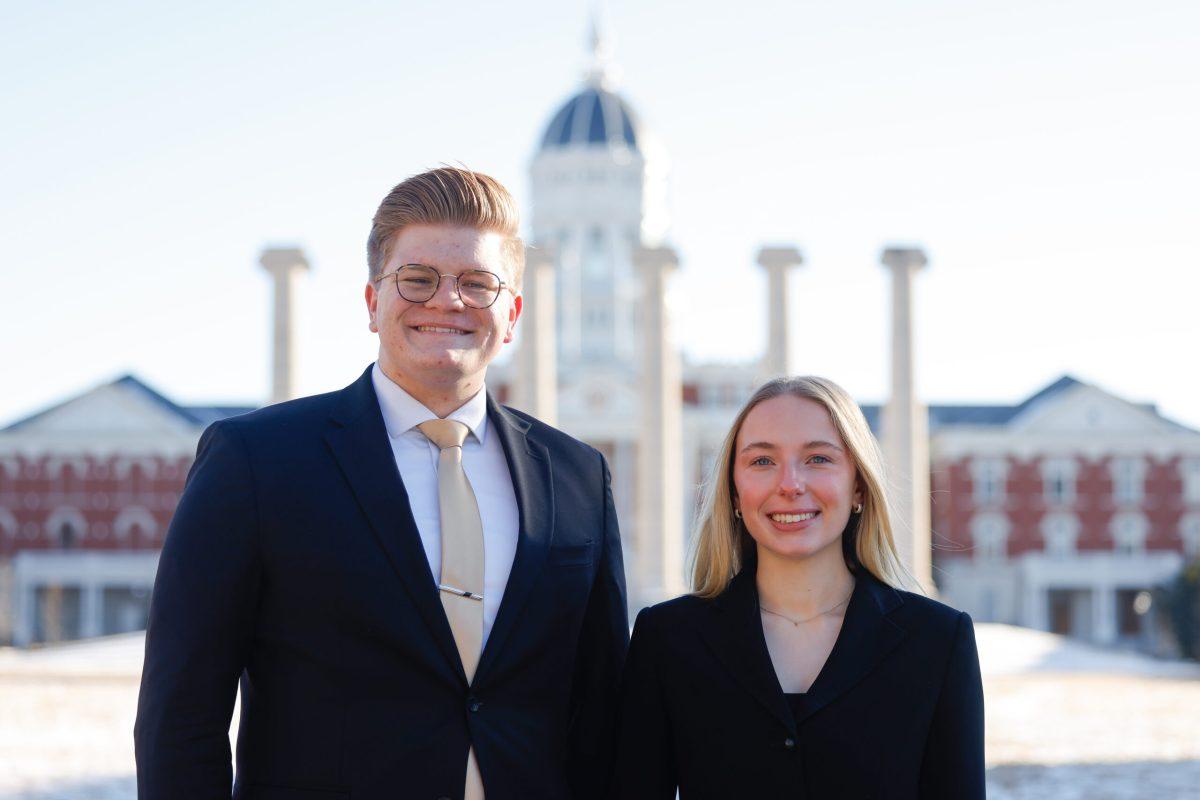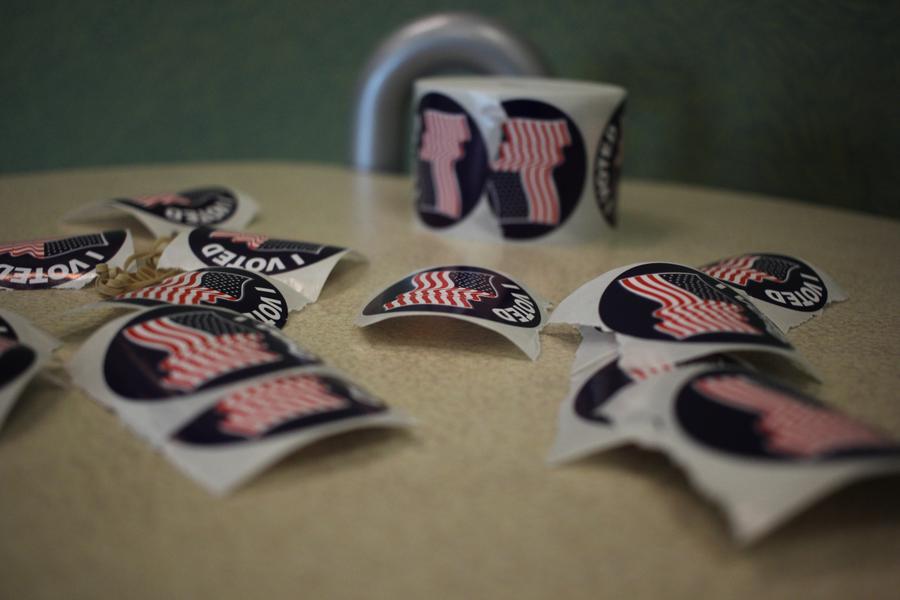Stunningly crafted, exquisitely detailed and unequivocally elegant, art collector Douglas Dawson’s curated selection of historic vessels mesmerizes potters and connoisseurs alike, according to Ceramics Professor Bede Clarke.
His contagious fascination and passion for historic pots mask a college student who once avoided the medium when searching for a fine art general education class.
“I had no interest in clay whatsoever,” Dawson said. “I was going to take a painting class, but they were all full. And then I thought ‘well I’ll take sculpture then.’ It was all full. The only class I could get into was ceramics, and it stuck.”
To Dawson’s surprise, his “remarkable” ceramics instructor saw untapped potential in his then amateur coil pinching. She encouraged Dawson to study in Japan, a country of particular interest to ceramic artists during the late ‘60s and early ‘70s.
Dawson took his instructor’s advice and traveled to Japan where he apprenticed for a master potter and learned the importance of ceramics in the ritualized and ceremonial drinking of matcha.
“It’s a non-verbal and very intimately communicative kind of ceremony,” Dawson said. “From tables to the containers that hold the cold water, the relationship between tea and ceramics is fundamental in understanding Japanese ceramics.”
But Dawson’s pottery immersion was not limited to Asia. After receiving a grant, he continued his travels to Guatemala to study pre-Columbian ceramics.
“It was a period when we were all just wandering,” Dawson said. “It was a very different climate in the United States. A lot of Americans were on the road in the Peace Corps, looking for great drugs in Afghanistan or a good time in Indonesia.”
Such travels furthered Dawson’s ceramic interests. He was, and still is, incredibly enthralled by the tenacity of pottery and how no other art, to his knowledge, has continually reflected human consciousness, human activity and cultural development.
These themes are primarily displayed through two ideas: fertility and ancestor worship.
“Because these are cultures that always lived right on the brink of disaster, they were very concerned for their survival,” Dawson said. “They wanted a lot of young women who could get pregnant and a lot of virile young men to keep the culture going. And ancestor worship relates to the same thing. People were constantly negotiating their relationship with the spirit world.”
After visiting international locations with bountiful ceramic tradition, Dawson settled in a commune in northern Iowa as a resident potter. But because of western nations’ comparative disinterest toward pottery, Dawson was not able to secure a stable career as an artist. Instead, he moved to Chicago, opened a gallery and focused on ethnographic art including textbooks, sculpture and, of course, ceramics.
As a collector, Dawson is meticulous in authenticating his pieces because of his buyer’s preferences for historic vessels.
“We’re so attracted to things with a sense of history, that somebody else has been there before us,” Dawson said. “ I think it’s a psychological thing. A lot of artists spend a lot of time trying to make the surface of their paintings or parts of their sculptures look a lot older than they really are. And we’re kind of vicariously appropriating someone else’s history, someone else’s experience, wanting to snuggle up to it somehow.”
But who should buy these pots has been a contentious issue that Dawson has had to navigate in his time as a collector and gallerist. At times, he has even discouraged prospective buyers from purchasing one of his pieces, suggesting they go to Crate and Barrel instead.
“There were just a couple of times where I deeply regretted selling something to somebody,” Dawson said. “It’s the question of stewardship. Who was most responsible to take care of these things that are very important and needed to survive?”
As a part of this selectivity, some gallerists consider whether a buyer has a cultural connection to a piece, a practice Dawson criticizes because it restricts buyers to a culture that they have no direct association with.
“I see all of this is as a connecting activity, not an exclusive kind of thing,” Dawson said. “I think one of the mistakes we’re making today in the art world is that only people who have some kind of racial-ethnic affiliation with this are the appropriate people to be thinking about it, looking at it, displaying it and owning it. I think it should be seen as wow, this is something that really brings us together and helps us understand each other.”
_Edited by Izzy Colón | [email protected]_














